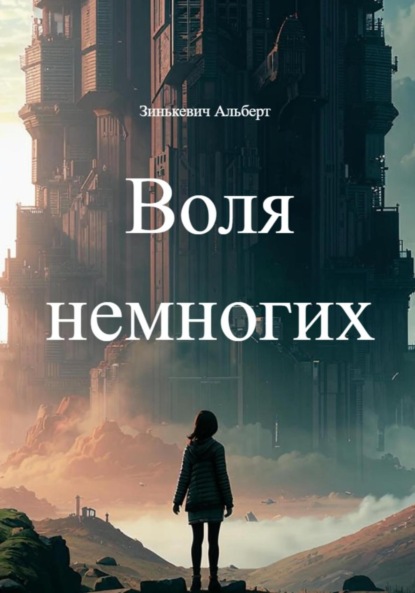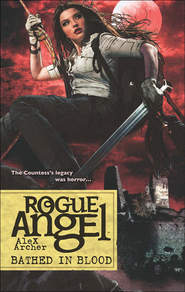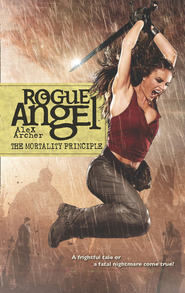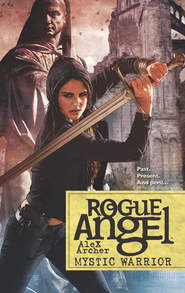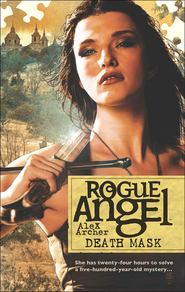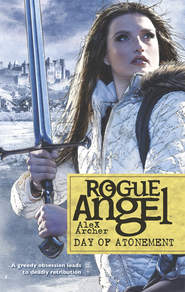По всем вопросам обращайтесь на: info@litportal.ru
(©) 2003-2025.
✖
Tribal Ways
Автор
Год написания книги
2019
Настройки чтения
Размер шрифта
Высота строк
Поля
The land flattened out as Annja drove through the Texas panhandle. As she entered New Mexico, the terrain gradually became vast wide swoops of tawny land. The occasional lone peak, most likely a volcanic extrusion, showed in the distance. The vegetation ran mostly to short grass, dotted with scrub.
Once, she saw a herd of pronghorn antelope grazing away off to her right.
As she neared her destination the land rose and grew more broken, mounting to what Annja, with all respect to the Wichita Range, considered something closer to real mountains, with ridges and slopes densely furred with straight-boled pines. These, she knew, were the Sandias.
The mountains rose left and right of the highway, then fell steeply in sheer granite walls to foothills that became high desert, sloping gently down to a line of trees that marked the course of the Rio Grande. Before her and to each side stretched the gray and chrome encrustation of an urban concentration—Albuquerque. She stopped there for lunch before continuing west into the desert.
Past the Acoma Reservation and the triangular bulk of Mount Taylor lay the small town of Grants. Following her GPS, confirmed by reference to a Google Earth map she’d summoned in her motel room in Lawton the previous night, a few miles west of Grants Annja turned left down a none-too-obvious dirt road. It wound quickly upward between steep, scrub-covered hills into the Zuni Mountains with their forests of ponderosa pine, along the Continental Divide.
The first attack had taken place at a dig in the Cíbola National Forest, working what was believed to be the remnants of an encampment of Warm Springs Chiricahua Apache led by the great guerrilla master Victorio during his war with the U.S. during the 1870s. The excavation had been protested by Native American groups even though the Mescalero tribe—which incorporated most of the survivors of the various Chiricahua groups except the Mexican Chiricahua, who were still in Mexico—offered no objection. It lay in a steep-sided draw. It had been discovered by a USDA team checking the results of reseeding by air after the area was burned over in a 2004 fire.
The attack had occurred the previous autumn. No signs remained of the dig or the murders. The excavation had been canceled after the incident. Wind and weather had smoothed out the disturbed earth.
Annja found no great mystery as to how the attacker could have struck from ambush there, either. The site lay along one side of a dry streambed, with the tree line beginning barely twenty yards away on one side and a rock outcropping looming twelve feet right above where, from the files, she knew the actual excavation had taken place. It would have taken a very athletic man to have dropped that distance without injuring himself. Then again it also took a very athletic man to kill three able-bodied adults—two men and one woman—and fatally wound a third man.
The sun was falling behind the divide as Annja drove back east. Although she still felt mostly numb about Paul’s death, in between wracking bouts of grief, she’d had a stressful couple of days. Not to denigrate the sheer physical toll long travel and combat took. She pulled off the highway just east of the river and spent the night in the Hotel Albuquerque on Rio Grande Boulevard, just north of Old Town.
AFTER EATING BREAKFAST the next morning at Little Anita’s near the hotel, she walked a few blocks south to the Old Town Plaza. It was a pleasant morning, still crisply cool, although warmer than out on the Plains near Lawton, with the sun just beginning to sting where it touched exposed skin. She sat on a cast-iron bench across from the old cathedral, beneath elm branches starting to turn green, while she used her computer to check her e-mail and confirm some information for her day’s quest. Then she made a few calls on her cell phone and hiked back to the hotel for her car.
The second attack had taken place in early March on land owned by San Ildefonso Pueblo between Santa Fe and Albuquerque. The pueblo itself had invited a state team in to excavate what was believed to have been a temporary settlement by Pueblo Indians sometime predating the great Pueblo Uprising that threw the Spanish out in 1680. Despite that fact, and the fact that both State of New Mexico archaeologists and pueblo experts had confirmed the absence of human remains, the site had once again drawn protestors. There had been an ugly confrontation when pueblo police removed them for trespassing, although there was no record of injuries, nor charges filed.
Apparently there was some sentiment, in the Southwest at least, that any kind of archaeological excavation of potential Indian sites was profane.
Although this massacre was just a few weeks old Annja didn’t learn anything new there, either. As in the other two cases a cautious approach could easily have gotten the killer in range for a final rush without being seen. Especially since nobody would really have been looking.
She got back to Albuquerque about two o’clock and spent the rest of the afternoon as she waited for her next appointment going through local and national news accounts of the murders online at a coffee shop on a fairly rustic-looking section of Rio Grande Boulevard a few miles north of her hotel.
The common threads among the murders, aside from the obvious gross similarities, were that they took place on dig sites that were protested by obscure groups. These had no apparent connection between themselves, other than professed radical pro-Native American sympathies. It wasn’t even clear how many of the protestors were actually Indians themselves.
She sat on the outdoor patio beneath a cottonwood beginning to leaf, drinking tea and pondering a few questions. Was the fact that all three attack sites had been protested significant or purely coincidental? If significant, what was the connection? Even the FBI, notoriously eager to discover terrorist conspiracies even where they weren’t, had either actively cleared the protestors of involvement or at least failed to list them as persons of interest.
Plus, frankly, people who’d go out and picket an archaeological dig struck Annja, who’d encountered a few in her time, as precisely the sort who would not be inclined to carry out impossibly violent blitz attacks ending in multiple murders. Nor, for the most, capable.
The light took on a late-afternoon yellowness. The sun had gotten tangled in the branches of the massive old cottonwoods across the boulevard. Time to go, she told herself, and folded her computer shut.
7
The western sky blazed in orange like burning forests when the silver Prius pulled up to the curb by the park and stopped. A tall woman got out of the driver’s side. A skinny young girl in jeans, T-shirt and a yellow Windbreaker, with her black hair in pigtails, got out of the passenger’s side. A big floppy yellow Lab pup, an adolescent probably, spilled out after her.
“You must be Dr. Watson,” Annja said, rising from the picnic table a short way down a grassy slope from the street as the woman walked toward her. She was handsome if a bit heavy in face and hip, and the hair hanging unbound around the shoulders of her mauve cable-knit sweater was black with silver threads. She wore a long dark-blue denim skirt over dark purple suede boots with silver medallions on them.
“Yes,” the woman said. “And you’re Annja Creed?”
Annja agreed she was. “And I’m Sallie,” the girl announced. “It’s short for Salamander!”
“No, it isn’t, Alessandra,” her mother said. “Don’t be untruthful.”
Annja laughed. Something about the girl’s appearance tweaked her subconscious. She couldn’t pin down exactly what.
The dog sniffed Annja’s legs. She hunkered down to stroke its head. “What’s his name?” she asked Sallie.
“It’s a she,” Sallie said. “Her name’s Eowyn. She’s kind of silly.”
“Young Labrador retrievers act that way,” her mother said. “Why don’t you and she go play?”
The girl was looking intently at Annja. “You’re on TV, aren’t you?” she said.
Her mother looked stern. Annja said, “Yes.”
“Oh. I like your show.”
“Thanks,” Annja said.
Sallie reached in a pocket of her jacket and produced a pale-green tennis ball, which she launched down the hill. The dog bounded in pursuit. Sallie ran after her, romping through the shadows of big elm trees lengthening across the hills of Roosevelt Park, which was located roughly halfway between the University of New Mexico campus, where Watson worked, and downtown.
“Thanks for taking the time to meet with me, Dr. Watson,” Annja said.
“Susan, please. I’m certainly willing to do anything I can to get to the bottom of these terrible crimes. And I thank you for being willing to meet with me under such unusual circumstances. I don’t really have any time free at school this week, and I don’t want to leave Sallie at day care longer than necessary.”
She leaned forward and fixed Annja with a disconcertingly probing look. Even without the low boot heels she had to stand six feet clear. Annja did not envy any student of Dr. Watson’s who failed to measure up to her expectations.
“So, is your interest in skinwalkers personal or professional?” Watson asked.
If she wanted to keep things up front Annja could match that. “Both,” she said. “I lost a close personal friend in the last attack.” She felt a nasty twinge as she said it.
“Also the authorities in Oklahoma have asked me unofficially to consult on certain anthropological aspects of the case.”
“You’re an archaeologist by training, aren’t you?”
“Yes. Of course, my training included extensive education in social and physical anthropology, as well as subjects like geology.”
“Oh, yes.” Watson herself was a professor of cultural anthropology at the University of New Mexico, specializing in the study of Southwestern native cultures. “So what can I do for you?”
“My specialty’s the European Renaissance. It’s a little far afield from the South Plains and the Rio Grande Valley. And to be perfectly honest, while we studied Native American history and cultures, my memory isn’t as sharp as it could be.”
“I understand,” Watson said with a grin. “I forgot all my geology pretty much the instant I turned in my last exam.”
“So if you could fill me in a bit on the cultural background of the Southwest and Plains cultures, and any hint you can provide me as to why something out of Navajo folk belief would be operating in the Comanche country of western Oklahoma would definitely be appreciated.”
“Well, to start with, the Indian cultures of North America didn’t live in vacuums, much less isolation from one another,” Watson said.
Annja was only mildly surprised at a tenured professor using such a politically incorrect term as Indian; very few Native Americans she’d ever met showed anything but the most strident contempt for the phrase Native American. Tom Ten Bears hadn’t had much use for it, either.
“Even before the Europeans’ arrival, my own people, the Kiowas, were especially famed for their roles as raiders and traders. Rather as the Vikings were in Europe and even the Mediterranean. So were the Comanches, especially after the two nations allied in the late eighteenth century. Comanche relics have turned up in the Cahokia Mounds. Kiowa tradition recalls trading voyages to the country of the Maya—who were themselves noted for the long journeys of their own traders, who also served as proselytizers for their religion.”
“Really?”
Watson nodded. “So the South Plains people were common visitors to New Mexico. What’s now northeastern New Mexico was part of their customary range. In fact, the Kiowa-Comanche alliance got its start in the 1790s on what’s now the site of Las Vegas, New Mexico—you did know there was one, didn’t you?”

